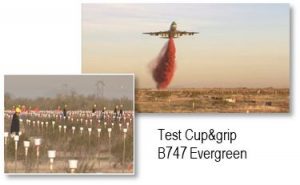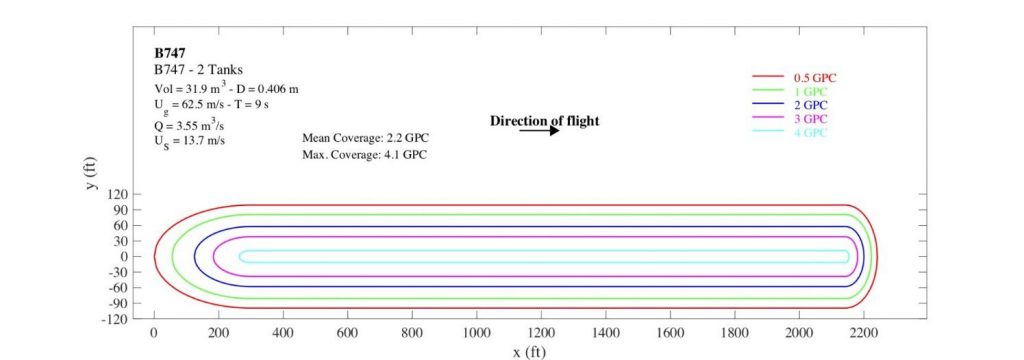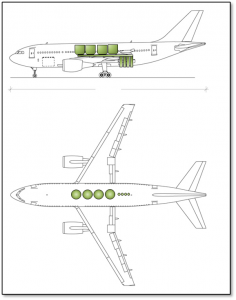Kepplair Evolution has teamed up with Professor Dominique Legendre, University Professor and researcher at the Institut de Mécanique des Fluides de Toulouse (1), to design the Kepplair Evolution’s Airbus retardant delivery system.
The main objective of a delivery system is to obtain the most regular and highly densify possible drop pattern. The challenge is to find the best possible compromise between the constraints related to liquid behaviour and the constraints related to the aircraft.
The philosophy of the IMFT/ Kepplair Evolution team was to start with the objective of drop pattern on the ground and climb up to the plane with a scientific approach.
 Knowledge of liquid behaviour
Knowledge of liquid behaviour
the USDA forest service in the United States and the CEREN in France test the airtankers according to the Cup & Grid method. They measure the coverage level on the ground. These coverage level are expressed in l/m2 or in GPC ( 1 GPC = 0.4 l/m2) . They are presented graphically and each colour corresponds to a coverage level.

By studying the data of the USDA Forest Service, Dominique Legendre discovered a physical law (2) establishing a relationship between the coverage levels and certain characteristics of the drop systems:
• Liquid velocity at exit of aircraft
• Surface of hatches
• Aircraft speed
He developed the software NaSCa able to predict the footprint of any drop system

Knowledge of the aircraft constraints
On all aircraft, there are weight & balance constraints whose objective is to maintain the centre of gravity in a specific area. Flight safety rules and the certification process require that the CG remains in the flight envelope in all situations, including in the event of a partial failure of the retardant delivery system.
This constraint requires us to locate the drop system (full or empty) close to the centre of gravity of the aircraft (above the front part of the wing).
On the other hand, we have to move the liquid ejection nozzles because the area under the centre of gravity, occupied by the landing gear and the fuel tank, is not accessible.
After several years of research, Dominique Legendre (INPT – IMFT), David Joubert (Kepplair Evolution) and Grégory Ehse (CNRS – IMFT) have invented KIOS, an innovative semi-pressurized delivery system that can transform any airliner into an efficient airtanker.
In 2019, with the support of Toulouse Tech Transfer (3), an international patent was filed to protect the KIOS concept.
Thanks to the NaSCa software the team was able to size all the components of the system, reducing the risk of design error and the need for Cup & Grid testing.

KIOS is designed to optimize the capacity of the system. With a volume of more than 35 m3 ( 9000 USG) the airplane KIOS is a VLAT.
The ejection of the liquid is controlled to have a constant flow rate and a constant output speed.
This regularity and control of the ejection speed will ensure a regularity and a concentration of the pattern above the existing system.
KIOS allows to choose the coverage level between 1 and 8 GPC.
KIOS is a modular system that will allow the aircraft to be used in multi role configurations.
KIOS limits the structural modifications of the aircraft thus reducing aerodynamic drag, fuel consumption and transformation costs.
Air tanker drop patterns « International Journal of Wildland Fire »
